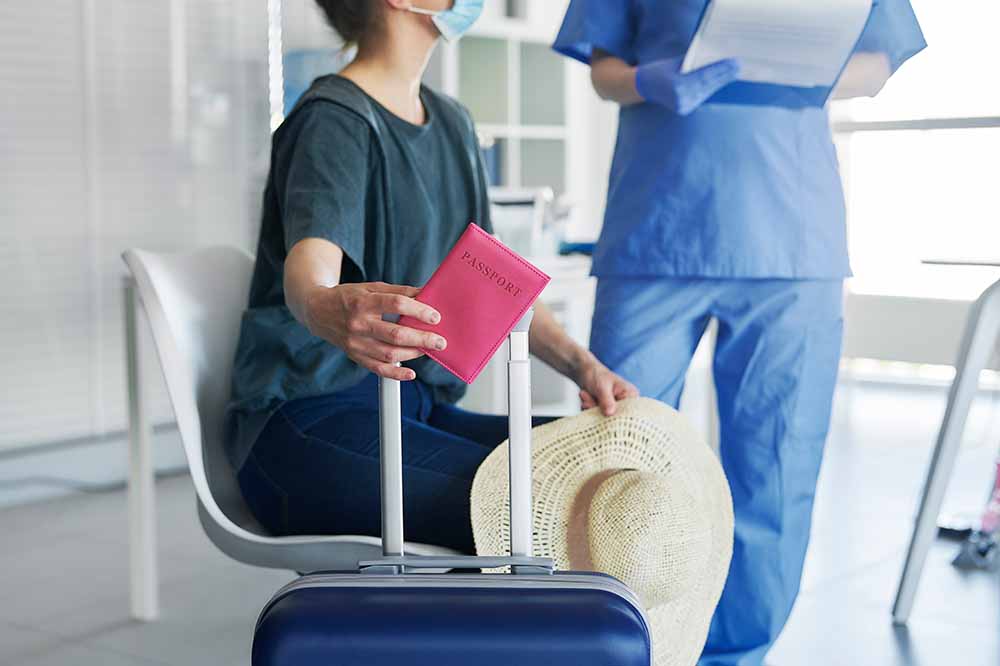Enter any of India’s state-of-the-art hospitals or clinics, and you’re likely to spot at least a foreign national or two. People have been flocking to the country over the last decade, to explore treatments for various illnesses and injuries. The Ministry of Health published a report in December 2023 highlighting the significant increase in medical tourists. From 183,000 visitors in 2020, the number soared to 504,000 in 2023. India is ideally positioned to receive medical tourism for a variety of reasons – foremost among them being the optimal intersection of cost and infrastructure.
Dr Nasra Ali, a dentist based in Bengaluru says, ‘Medical tourism occurs for two reasons. Firstly, people from lesser-developed countries with poorer healthcare systems may travel to countries with better healthcare. For specialised treatments and specific illnesses, high-quality and advanced medical care is required, which gives these patients the impetus to travel abroad. The second reason for medical tourism is the astronomical cost of healthcare in developed countries. If a destination offers world-class medical facilities at a fraction of the cost in one’s home country, it can save big bucks. Take my own field for instance. Even the most elaborate and expensive dental treatments in India can cost as little as 25 per cent of treatment in countries such as the United States or Canada. This includes the cost of travel and stay. What’s more, many clinics today offer high-quality infrastructure and equipment, with doctors who have international qualifications and speak English well.’
Medical tourism isn’t a new concept. It first started around 4000 BC in ancient Sumeria, which was home to the earliest health complex. People would travel for miles just to visit it. The ancient Greeks sought out spiritual healers and physicians in far-flung corners of the subcontinent for their medical expertise. Communal spa towns were also popular in the medieval and early modern period. With the ease of travel today, medical tourism today is a burgeoning business that provides the traveller with suitable (and sometimes cost-effective!) solutions, while creating a separate economy for the country being visited.
The Medical Tourism Association (MTA) has estimated that around 14 million people globally travel to other countries to receive medical care. A report published in Fortune Business Insights states that the global medical tourism market was valued at $24.14 billion in 2023 and is projected to reach $137.71 billion by 2032, exhibiting a CAGR of 21.4 per cent during the forecast period.
According to the National Health Policy, 2002, it is clear that government policy in India supports medical tourism as well. It states, ‘To capitalise on the comparative cost advantage enjoyed by domestic health facilities in the secondary and tertiary sector, the policy will encourage the supply of services to patients of foreign origin on payment. The rendering of such services on payment in foreign exchange will be treated as ‘deemed exports’ and will be made eligible for all fiscal incentives extended to export earnings.’
Dr Nasra says, ‘Of course, there are challenges to medical tourism in India as well. The first is the inconsistency and lack of transparency in fee structure. Each hospital, clinic or lab can vary greatly in terms of what they provide for the cost. Legislation needs to be more stringent, even with private players. If someone visiting from an under-developed country is relying on government healthcare, there are already a high load of local patients in government hospitals and not enough infrastructure or medical staff to support it.’

One another major contributing factor to medical tourism in the country is the presence of alternative streams of medicine. Besides being the hub for cardiac issues, oncology, cosmetic procedures, and orthopedics, India is also a hub for people who want to explore the native systems of medicine.
‘We receive a lot of tourism from NRIs and foreign nationals who visit us to explore Ayurveda,’ says Dr Sherena Varghese, an Ayurvedic and Panchakarma practitioner. ‘The Indian Government has also recognised this and come up with a special visa called the Ayush Visa for those who want to travel for this purpose. The Ministry of Tourism has been actively promoting travel for Yoga and Ayurveda over the last few years and we’ve seen a huge surge in visitors. A number of Ayurvedic resorts and hospitals have been set up to cater to every price point. Other streams like Siddha and Naturopathy are also becoming popular now. These are holistic approaches to wellness that are also deeply embedded in science. So unlike a spa resort abroad, they come under the umbrella of medicine.’
Today, India is recognised as a quality healthcare destination across the globe, slowly but surely inching its way toward the top spot. The end goal is to utilise our talent and resources, and boost the medical and tourist economy in the country while enabling people around the world to live healthier and happier lives.